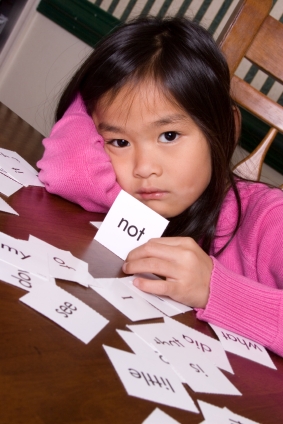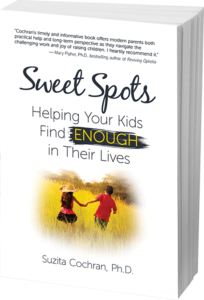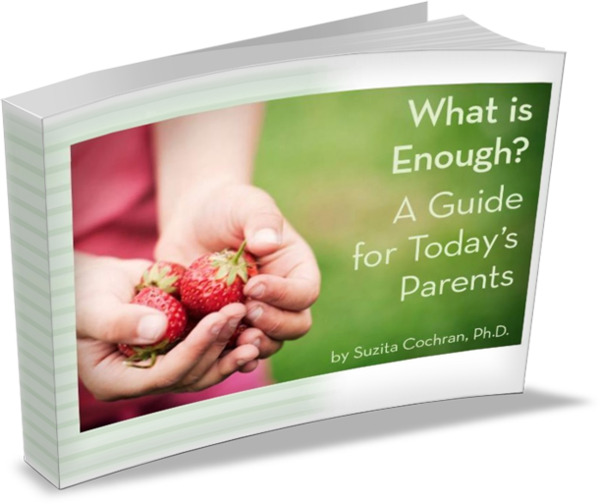 My daughter Annie started first grade raring to go. After all those years of watching her big brothers attend full-day school, her time had finally come. She was a real school kid. There was just one problem. In Annie’s mind, real school kids could read and Annie couldn’t do this yet.
My daughter Annie started first grade raring to go. After all those years of watching her big brothers attend full-day school, her time had finally come. She was a real school kid. There was just one problem. In Annie’s mind, real school kids could read and Annie couldn’t do this yet.
All three of my kids were late bloomers when it came to academic skills such as reading and writing. If you gave them a ball, bike, or a pair of sneakers, on the other hand, they knew just what to do. But physical prowess wasn’t what everyone was discussing in first grade, at least not in Annie’s circle.
Like her brothers, the structures and synapses Annie’s brain needed in order to take off in reading were not fully developed in first grade. Unlike her brothers who didn’t notice much going on around them during those early elementary years, Annie was aware of her situation. A month into school Annie came home and sadly informed me that she wasn’t in the good reading group. Then she proceeded to list the kids who were.
“I just can’t read as well as Kate and Amy and Lisa, Mama. I’m never going to be in their reading group,” Annie said dejectedly.
She was right. Her reading was progressing slowly, even though she was putting in quite a bit of practice. But as I’d seen particularly with her brother Daniel at this age, Annie’s reading ability had hit a plateau. It was as if her current level of brain development could only carry her so far. Therefore, I couldn’t advise her to simply practice more, as I could with other skills she was truly capable of but simply hadn’t learned yet. It was a rough time.
Since Annie was getting better at following the plots of chapter books when I read them aloud, we did this frequently during that period. I also worked with her on math games, such as Perplexors. Annie adored these puzzles and they came more easily to her than reading.
It’s so challenging to watch kids struggle. During this phase in Annie’s life I re-read prominent psychologist, Martin Seligman’s The Optimistic Child: A Proven Program to Safeguard Children Against Depression and Build Lifelong Resilience in which he summarizes the results of a decade of research on optimism in children. I was looking for ways to help Annie maintain optimism during her bumpy process of learning to read. Seligman writes that school-age children begin to develop theories about why they succeed and why they fail. We parents can have some influence over these theories by carefully choosing how we talk to our kids about their struggles. Our kids’ theories about success and failure will be the foundations of their later optimism or pessimism about the world.
Optimism v. Pessimism
Seligman emphasizes that optimism is much more than being upbeat and facing each day with a smile. It involves accurately perceiving how much control we have over our lives while also taking responsibility when we’ve caused a problem. Seligman then notes that cynicism and pessimism go deeper than merely being urbane postures donned at parties, paired with the wearing of muted clothing.
Pessimism is a “theory of reality” that our children can learn from us, their teachers, or other significant adults in their lives. Research finds that pessimistic people get depressed more often, achieve less in school and work, and have worse physical health than optimistic people.
Optimistic and pessimistic personality styles involve habits of thinking called explanatory style, according to Seligman. This is how we explain things to ourselves. I learned that I should listen to how Annie explained to herself the struggles she was having learning to read, because certain explanations are more optimistic than others.
What to Look for
There are three characteristics of explanatory style to look for when helping our kids lay the foundation for an optimistic worldview. The first is how permanent they consider a problem to be. Pessimistic people believe the cause of something unfortunate is permanent and unchangeable. Meanwhile children who bounce back from setbacks tend to consider the reasons for bad events to be temporary. Seligman writes that permanent thoughts make us feel down and ready to give up before even trying. In contrast, if we believe the situation is changeable, we feel energized and strive to find ways to alter it. On the other side of this coin, when something good happens to an optimistic person, she tends to view her situation as permanent rather than temporary.
The second quality of our explanatory style is pervasiveness. When something negative happens to a pessimistic person, she tends to see it as having a global effect on her life, rather than it being tied to a specific issue. If a pessimistic child doesn’t win a writing contest, he reasons that it’s because he’s not smart. He probably shouldn’t enter any more contests. School just isn’t his thing. An optimistic child, however, might attribute his lack of a ribbon as due to poor editing of that particular paper. Additionally, an optimistic child would see a success as representing a global attribute. “I did well on that project because I’m creative and hardworking.”
The final aspect of explanatory style is personalization, deciding who is at fault when something bad happens. Seligman stresses the importance of viewing a situation with accuracy. If something was the child’s fault, does she begin to think about how to make amends or does she spiral down into self-blame and become stuck? It’s also important for children to think about other factors outside themselves which might have played a role in a negative result.
Optimistic people perceive their responsibility for problems accurately. “I would have been on time for the play rehearsal if I’d started getting ready earlier. But I’m also not the only one having a rough time getting around with all this unexpected ice and snow on the roads.” Optimists move fairly quickly into considering what they can do to fix the problem. “I’ll apologize to our director for being late and ask her if I can stay after rehearsal to hear what I missed.”
Extreme pessimists often wrongly believe they are the cause of negative events that they had little control over, a characteristic also seen in people with depression.
Back to Annie
When Annie was striving to learn to read, she seemed to be on the fence as to whether her situation was temporary or permanent. She wasn’t used to skills taking her this long to master. I, on the other hand, had more data at my disposal. I remembered how long it took her to learn to talk (again, hello late bloomer!) and I’d seen her brothers learn to read later than many. Remember the young kids’ book Leo the Late Bloomer about the sweet tiger who learned every life skill later than everyone else? Todd and I used to read this book to help ourselves feel better at these times in our kids’ lives.
I told Annie that her experience learning to read was very similar to that of her brothers, who have become strong readers over time. This information helped Annie realize that her situation was indeed temporary.
During her reading struggles, I never heard Annie say this was hard because she wasn’t smart. I think she was able to look at her situation as a problem with reading rather than a problem with her abilities throughout school, but I worried her view might shift into a global one over time. Therefore, I frequently pointed out other skills that were coming rather easily to her, such as math. Some days this helped. Other days Annie challenged my comments.
When it came to who was responsible for Annie’s problem, there was less I felt I could do. She, or rather her young brain, was likely the cause. I never mentioned anything about brain development to Annie, even though this was how I saw her reading situation. I didn’t think she would have understood this concept. Since I was fairly certain her trajectory would be similar to her brothers’, I merely tried to help both of us remain patient.
If I had heard Annie say that she couldn’t read because she wasn’t smart, I would have used the technique Seligman calls “disputing”. Disputing would have involved presenting alternative evidence which challenged Annie’s belief she wasn’t smart. “What about that good grade you got on your science project? Or the recent time when your teacher held up your writing assignment as an example for the other kids? Do these things suggest you aren’t a smart kid?” (To be honest, I would have probably moved Annie away from the word smart. In my mind “smart” is a vague concept which means different things to different people.)
Practicing Optimism
Seligman encourages us to teach our older kids to dispute their negative thoughts on their own. He frames it as teaching our child to be a detective, first noticing that a thought has popped into his head, next understanding that the thoughts we “hurl at ourselves” aren’t necessarily true, then using his detective stance to challenge the thought by generating alternative possibilities. Because as the saying goes, we shouldn’t believe everything we think.
One way we can teach our children to dispute pessimistic thoughts is by revealing our own thinking process to them. When the furnace repairman is late we can vocalize our thinking with our kids. It might start with, “Why does this always happen to us? It’s as if there’s a huge sign on our house saying ‘Feel free to push us to the end of the list!’” Then we can take a breath, slow down, and begin to dispute these initial thoughts aloud. “Well, it is Friday afternoon and there’s a lot of traffic out there. Maybe he’s stuck in it. And I guess we are lucky that he offered to come today rather than let us freeze until tomorrow. It’s not completely true that repairmen are always late to our house. The plumber who fixed our outdoor spigots came early last month.” Once we get started, we could even have our kids help us continue disputing our pessimistic stance.
Showing our children our thinking processes and the way we handle them not only teaches them how to become optimists, but gives us more practice thinking this way. Just because I’m writing about this doesn’t mean I’m out there doing it daily. Like most of us, I need to commit to practicing optimistic thinking more often. As I tell my kids, “It’s simple. We become best at what we practice most.”
Annie’s reading did progress over time. Her improvement trajectory was not a smooth upward slope, but rather jagged leaps and bounds throughout the year. In the end the thing that helped most was reminding her that her “problem” was temporary. Annie’s still not in the reading group that she wishes she were in, but she’s much less frustrated about reading now. We regularly find her reading chapter books aloud to her stuffed animals or hamsters with the pride of having accomplished a long-awaited skill.
How have you handled the late bloomer in your life? Leave a comment!

 Sweet Spots: Helping Your Kids Find ENOUGH in Their Lives.
Sweet Spots: Helping Your Kids Find ENOUGH in Their Lives.


We had a similar situation with a slow to read younger child. She struggled through all off 1st grade and much of 2cd.She barely reached a 2cd grade level at the end of that year, although she did make it our of her ILP.
I realized, through trial and error, that the problem had nothing to do with her brain development or attitude toward problem solving–it was actually the high pressure school atmosphere that was preventing her from learning. She had a very calm and creative reading group teacher in 2cd grade that helped her become more motivated to learn. Because she made such a big gain with a change in approach, I realized the school was generally too high pressure.
I switched to her a good public school that puts more of an emphasis on making students feel comfortable and on social relations. The philosophy is that students who feel comfortable and relaxed will be ready to learn. The first week she came home and said “Mom, I’m not going to learn as much at this school–all we have been talking about is things like how to make friends.” On the contrary, after two months she tested at almost a 5th grade level in reading, and is making huge gains in her writing, doing much more more than she would have attempted previously. Her teacher is convinced that she will move up out of 4th grade reading before the end of the year. Her current reading teacher cannot believe she was ever on an ILP.
What I learned? Stress and anxiety are so damaging for young learners. Had I left her in that school I believe her learning would have been permanently impacted.
Good to remember that there are a wide range of reasons kids may have trouble learning to read. And of course we haven’t even touched on reading disabilities, an obvious issue for parents to check into if reading remains a challenge over time.
It’s funny, in our house we don’t celebrate the things that come easily but the things that take dedication and practice. I cannot tell you how PROUD I am that my son can tie his shoelaces. We had melt-down after melt-down on this topic, even though I didn’t think he was physically ready yet (I’d had a LOT more practice before velcro shoes became mainstream but didn’t get shoe tying until I was older), one day after ages of trying he figured it out. He next plans to master the “rocket” method now that he’s figured out “bunny ears.”
Such a nice idea, to celebrate what takes dedication and patience! Let me know when he’s mastered the rocket method. That will be a proud day. I can literally still remember the day I learned to pump on the swing, 41 years ago now.
I love that book by Martin Seligman. I have been a child and adolescent therapist for 10 years in many different setting and when I started working at a clinic in the local hospital, my supervisor wanted me to read that book.
I learned all kinds of ideas that I didn’t know previously in 9 years in the field. Thanks!